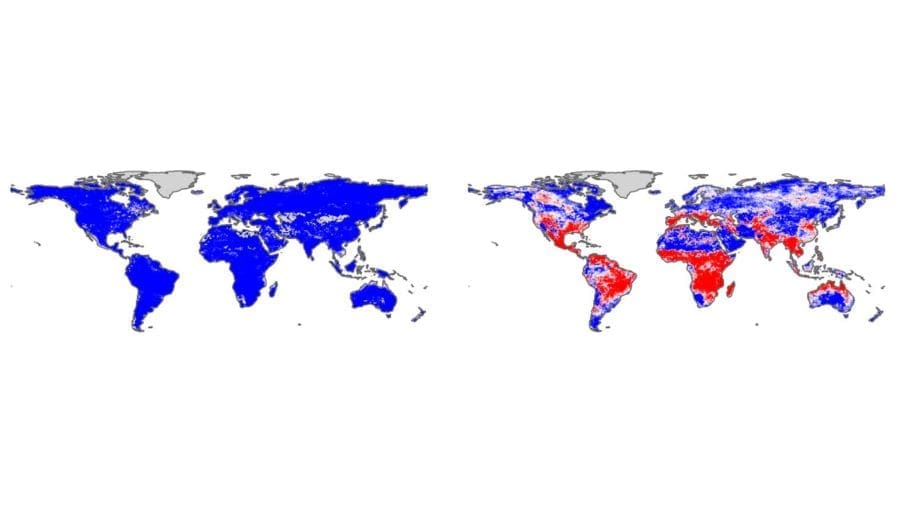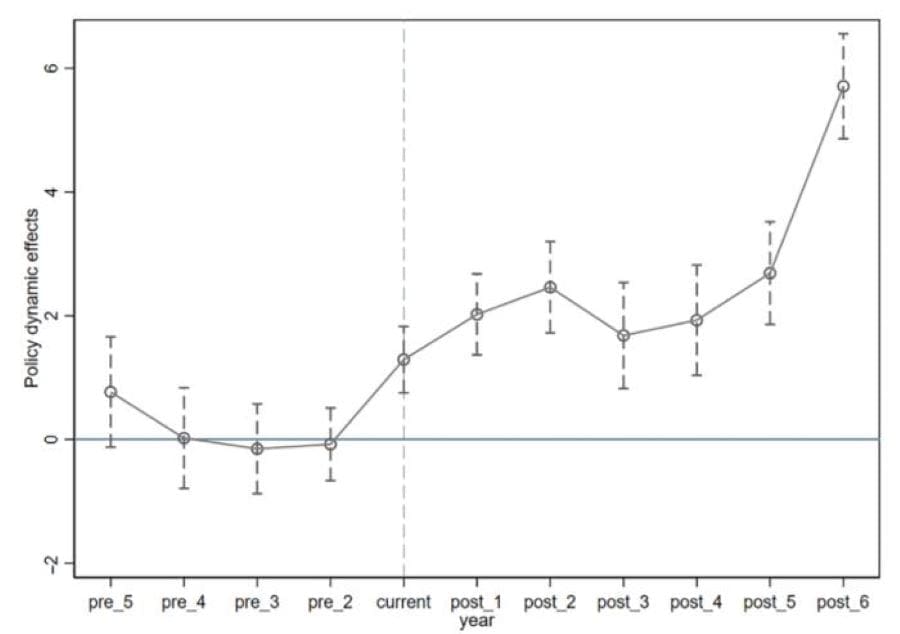Explore the latest insights from top science journals in the Muser Press daily roundup (June 6, 2025), featuring impactful research on climate change challenges.
In brief:
A forward-looking approach to climate disaster preparation
Vulnerable communities in the Southeastern United States must look to the future, not the past, to prepare for climate disasters, according to researchers at the Feinstein International Center, located at the Gerald J. and Dorothy R. Friedman School of Nutrition Science and Policy at Tufts University.
In a recent paper published in the Bulletin of the American Meteorological Society, the researchers document substantially higher risk of extreme temperatures and flooding in the Southeast U.S.
The researchers’ work, which was supported by a NASA cooperative grant, also includes a proposed framework to help these communities better prepare for disasters they have not yet experienced but are likely to encounter.
“Disaster planning based on historical events is like driving forward while only looking in the rearview mirror,” says principal investigator Erin Coughlan de Perez, research director at Feinstein and Friedman School associate professor. “Many communities are planning for what they have seen in the past, only slightly worse. They need to be preparing for things they haven’t seen at all.”
While the entire region is at risk for extreme weather events, some communities also have a “high potential for surprise,” say the researchers, who include The Fletcher School graduate students Bethany Tietjen, F20, and Jenna Clark, A21, as well as Amy Jaffe, a non-resident senior fellow at the Climate Policy Lab.

“These are communities where the overall risk has increased over time, but the community hasn’t experienced one of these severe weather events in recent memory,” says Coughlan de Perez. This makes them potentially poorly prepared for future disasters, or “sitting ducks,” according to the researchers’ framework.
Analyzing five counties, researchers found them all to be “sitting ducks” when it comes to an extreme heat event. According to the study, Montgomery County, AL, Yazoo County, MS, Madison Country, TN, Warren County, KY, and Terrebonne Parish, LA, have gotten lucky in recent years and not had significant heatwaves.
“What our models showed is that temperatures have been rising gradually over the years, with one year maybe being really hot, but because the risk has been changing slowly, people living in these communities may not have noticed it,” Coughlan de Perez says.
When it comes to flooding, researchers concluded that Yazoo County is also a “sitting duck.” The other four communities fall into what the researchers call the “living memory” category, meaning there is a recent flooding event that people can remember, which can encourage people to stay prepared for future events. “Flooding events have also increased in frequency during the rainiest months of the year, but not every community has experienced catastrophic flooding,” Coughlan de Perez says.
In what the researchers categorize as “fading memory” communities, a particular weather event has become less frequent, and people barely remember it. “Boston used to have frequent extreme cold snaps in the winter, for example, but that happens less often now,” Coughlan de Perez says. Similarly, in “recent rarity” communities, people might remember a particular weather event – but the likelihood of it happening again is also relatively low.
In their analysis, the authors used large weather models of historical weather events between 1981-2021 to examine the five Southeastern U.S. counties, which were a combination of urban and rural communities. “It’s a roll of the die whether they have experienced extreme weather events yet or not. Extreme heat and flooding are in their futures,” Coughlan de Perez says.
Preparation may include identifying those at greatest risk; setting up accessible cooling centers for those who are homeless or don’t have air conditioning; educating the public about evacuation plans and potential shelters for floods; putting state or local heat protections in place for outdoor workers; establishing communication systems to alert residents to the dangers of high daytime and overnight temperatures or impending floods; and other measures.
The Tufts team is working with the American Red Cross in multiple locations to improve disaster planning, but Coughlan de Perez notes that state and local policies addressing extreme heat and flooding are often limited and need to be developed further.
In the meantime, Coughlan de Perez says: “Our ultimate goal is to provide a framework to help all communities prepare for weather events they may not have experienced before but have a high likelihood of facing in the future.”
***
This work was supported by a NASA cooperative grant titled ‘Today’s Risk of Extreme Events’ (Agreement 80NSSC22K1706). Complete information on authors, methodology and conflicts of interest is available in the published paper. The content is the sole responsibility of the authors and does not necessarily represent the official views of the funder.
Journal Reference:
Masukwedza, G. I. T., J. Clark, A. Jaffe, I. Jeffries, B. Tietjen, and E. Coughlan de Perez, ‘Storylines of Unprecedented Extremes in the Southeast United States’, Bulletin of the American Meteorological Society 106, E441–E455 (2025). DOI: 10.1175/BAMS-D-23-0297.1
Article Source:
Press Release/Material by Julie Rafferty | Tufts University
Multiple extreme climate events at the same time may be the new normal
In a new study published in the journal Earth’s Future, researchers from Uppsala University and Belgian, French and German universities have shown that in the near future several regions of the world will no longer just be affected by isolated climate-related events. Instead, several different events will occur concurrently or in quick succession.
“We have long known, for example, that there will be more heatwaves, forest fires and severe droughts in many regions – that in itself is no surprise. What surprised us is that the increase is so large that we see a clear paradigm shift with multiple coinciding extreme events becoming the new normal,” says Professor Gabriele Messori, the study’s lead author.

Using models to predict the future climate – temperature, rainfall, wind and so on – is a common method in climate research. In this study, the researchers have gone a step further by feeding that data into additional models that deliver information on the concrete impact on society. By calculating the effect of climate change on, say, the risk of forest fires or floods, a clearer picture emerges of how different regions of the world might actually be affected. The analysis examines what will happen between 2050 and 2099. The researchers looked specifically at six types of events: floods, droughts, heatwaves, forest fires, tropical cyclone winds and crop failures.
Heatwaves and forest fires a recurrent feature
The study shows that combinations of heatwaves and forest fires will increase sharply in almost all regions of the world, except where there is no vegetation, as in the Sahara. Heatwaves and droughts will become a recurrent feature in areas such as the Mediterranean region and Latin America. Areas that now generally experience isolated events, such as the Nordic countries, will also be more frequently affected by heatwaves and forest fires in combination.
“The summer of 2018 in Northern Europe was characterised by unusually high temperatures and widespread forest fires – which at the time was regarded as an exceptional event. In a few decades, it may not be so unusual,” says Messori.
Poses new challenges for preparedness
The researchers’ analysis covers several possible emission scenarios. However, the main focus is on a medium scenario, which is considered realistic given current emission trends.
Messori added: “It is important to emphasise that this shift that we see does not only occur if we look at the most extreme case, where we do nothing to reduce our emissions, but also if we consider a less pessimistic scenario. From a societal perspective, we need to broaden our preparedness to deal with these co-occurring extreme events. We are going to face a new climate reality that we have limited experience of today.”
Journal Reference:
Messori, G., Muheki, D., Batibeniz, F., Bevacqua, E., Suarez-Gutierrez, L., & Thiery, W., ‘Global mapping of concurrent hazards and impacts associated with climate extremes under climate change’, Earth’s Future 13, e2025EF006325 (2025). DOI: 10.1029/2025EF006325
Article Source:
Press Release/Material by Uppsala University
Climate policy uncertainty fuels ESG upgrades in Chinese firms
As global climate risks intensify, climate policy uncertainty (CPU) has emerged as a critical challenge for businesses worldwide. While environmental, social, and governance (ESG) performance has gained prominence as a driver of sustainable development and investment decisions, the relationship between CPU and corporate ESG strategies remains underexplored.
This study addresses a key gap in the literature by investigating how rising CPU – driven by evolving climate policies – impacts ESG performance in Chinese listed companies. China Finance Review International (CFRI) is pleased to present the paper titled ‘Climate policy uncertainty and corporate ESG performance: evidence from Chinese listed companies’, which identifies actionable strategies for firms to mitigate risks and enhance resilience in a rapidly changing regulatory and environmental landscape.

Methodology and Scope
The study employs a robust panel regression analysis using data from 4,490 Chinese A-share listed companies across 12 industries from 2011 to 2022. To ensure reliability, researchers utilised advanced econometric techniques, including:
- Propensity Score Matching (PSM) to address selection bias.
- Two-Stage Least Squares (2SLS) and System Generalised Method of Moments (sys-GMM) to tackle endogeneity.
- Difference-in-Differences (DID) analysis leveraging the 2016 Paris Agreement as a policy shock.
Key Findings and Contributions
- Positive Link Between CPU and ESG Performance: Higher CPU levels are found to significantly enhance corporate ESG scores, particularly among non-state-owned enterprises (N-SOEs), companies in heavy-polluting industries, and firms operating in regions with stringent environmental regulations. Mechanism analysis indicates that firms with elevated systemic risk tend to exhibit more pronounced ESG improvements as a strategic risk-mitigation measure.
- Dimensional Variations in ESG Impact: CPU has the most pronounced positive impact on the environmental (E-score) and social (S-score) dimensions of ESG. However, governance (G-score) performance experiences a slight decline, which is a counterintuitive finding. This decline is attributed to short-term governance challenges that arise during periods of policy transition.
- Economic Consequences: The strategic ESG enhancements driven by CPU lead to tangible economic benefits. Specifically, they help reduce operational risks, such as return volatility, and significantly boost total factor productivity (TFP). These findings underscore the dual benefits of sustainability investments, highlighting how improved ESG performance can drive both environmental and economic gains.
Why It Matters
This research holds critical implications for stakeholders:
- For Governments: Highlights the need for tailored policies supporting ESG adoption, especially in vulnerable sectors. Stringent yet stable regulatory frameworks can amplify positive outcomes.
- For Businesses: Prioritises ESG integration as a strategic tool to navigate CPU, enhance reputational capital, and unlock long-term value. Non-state actors and polluting industries must act proactively to mitigate risks.
- For Investors: Emphasises ESG metrics as a hedge against climate-induced volatility, guiding portfolio decisions toward resilient firms.
Journal Reference:
Zhifeng Dai and Qinnan Jiang, ‘Climate policy uncertainty and corporate ESG performance: evidence from Chinese listed companies’, China Finance Review International (ahead-of-print) (2025). DOI: 10.1108/CFRI-05-2024-0272
Article Source:
Press Release/Material by Shanghai Jiao Tong University Journal Center
Featured image credit: Gerd Altmann | Pixabay




